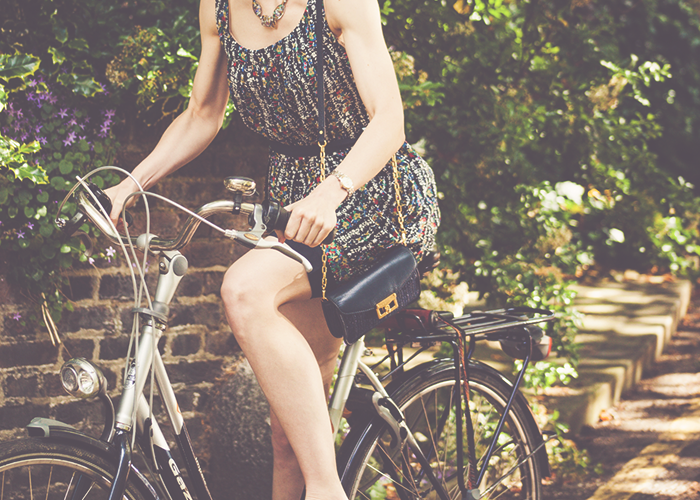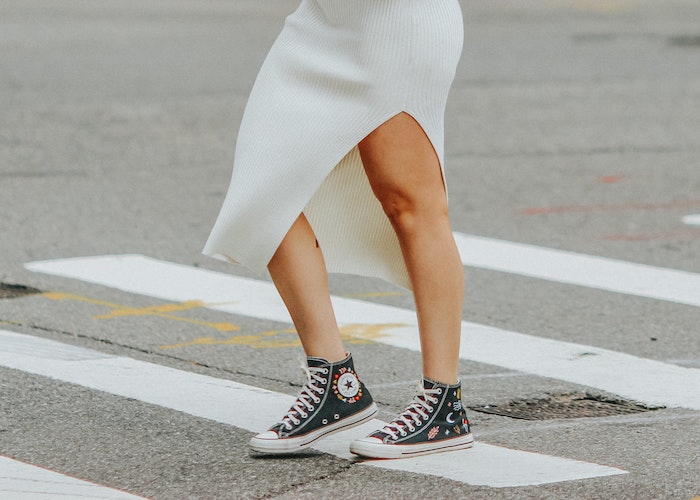The 5 No-Brainer Steps I’m Taking To Slowly Eliminate Fast Fashion
My relationship with fast fashion is complicated, because when you’re young and don’t have a ton of money to play around with, it is basically the only option. I’ve always really valued and desired a vast, artful wardrobe as a form of creative expression. I do a lot of different things to keep up with that hobby, but I also try my best to not hit up huge chain fast fashion retailers as much as I did when I was younger, and more confused about my ~personal style~. Although I haven’t exactly adopted anything near #NeutralLife, and I’m definitely nowhere near Minimalist Pixie Dream Girl status, my understanding of my style and what I actually like to wear has developed and matured into something that I actually have some sort of grasp over, and therefore can justify investing in instead of being scattered and financially reckless about. Although my closet is gently peppered with a pair of $10 H&M shorts here and a Primark handbag there, I’ve made a conscious effort within the past year (and more specifically, in the past few months) to be more mindful and selective about what I’m spending my money on, both for ethical and financial reasons.
I did two huge closet purges this year (one in January, and one this week), and still have a little more editing to do. Even so, editing my closet regularly helps me keep a good handle on what I own, what I actually like/wear, and what I may need. I feel like 2016 is the first year I’ve understood, definitively, what the implications are of having such a strong and complicated relationship with fashion – and how to adjust the relationship into a healthier and more sustainable one. Here are the tips that have really helped me so far.
1. Buy nice things. Even though they cost way more.
Durable, long-lasting, high-quality articles of clothing are certainly more expensive, but they really do last. If I compare the one thick-material, expensive shift dress I own next to its cheap, flimsy counterpart hanging next to it in my closet, it is clear which was truly well-made. I am actually amazed that I’ve owned that dress since my freshman year of high school (seven years ago), and it still looks as perfect as it did the day I brought it home. As much as I do aesthetically enjoy the 15 cheap shitty ones, and will wear them until I truly can’t anymore, I know they won’t last more than a summer or two and will inevitably need to be replaced. And mark my words, I will not be replacing them with more cheap shitty ones. I want every dress I own to be the well-made shift dress. I’m a freaking grown-up now.
2. Buy only nice things you really like.
If you are super-selective with what you chose to own and having a wardrobe that consists entirely of pieces you genuinely love, it means you’re way less likely to feel compelled to replace items constantly. When you own shit you don’t even like, but justify the purchase because it is cheap and “good enough,” you’re way more likely to get that fed up, “I have nothing to wear” feeling and run out and grab some cheaply-made piece of crap to fill the temporary void. (This has been my experience, at least. I’m working on it!)
3. Buy nice things at thrift stores or secondhand stores.
We already know that shopping secondhand doesn’t absolve you of the need to be ethically and financially responsible about your purchases. It is definitely possible to shop too much at a thrift store, and shop the wrong way at a thrift store, even though the items are cheap. The fact that a thrift store t-shirt only costs $4 doesn’t mean it is necessarily a good idea to grab an excessive amount of them (see point #1). Let the fact that the secondhand items are deeply discounted be an added bonus, but still treat the clothes like clothes, and remember that you still shouldn’t buy shit you don’t like even if it is inexpensive.
4. Buy nice things, but be hella protective over them.
An obvious step towards eliminating fast fashion from your life is to invest in more expensive, higher quality pieces. But if you’re as reckless with your pricey Everlane silk blouse as you are with the threadbare Forever 21 top you toss into the washing machine without a care in the world, you’re going to ruin the expensive pieces. And when you ruin the expensive pieces, do you think you’re going to replace them with more expensive pieces? My guess would be no. You’ll shrug your shoulders, wonder why the higher quality piece still got ruined, and return to old habits. Properly caring for nicer items may take some time (I hand-wash 75% of my wardrobe and it is the most tedious task I perform each week), but it will save you lots of money in the shitty replacements you’ll convince yourself you need to buy in place of the expensive thing you ruined.
5. Buy nice things from places that aren’t fast fashion retailers, but buy most of your nice things from very ethical brands.
Cutting fast fashion out is a great thing to do, but if you want to take it one step further, exclusively supporting brands that sell good-quality clothing that is ethically produced, you’re doing both yourself and the world a favor. After the winter closet purge, I made a good chunk of money selling old clothes, and used it to invest in a few super ~adult~ pieces from Everlane. although that is the most money I’ve probably ever spent at a store, it was well worth it. I feel good about the items I bought there in every way — morally, financially, and fashionably.
Mary is the summer Media Fellow at The Financial Diet. Send her your summer intern stories (your lessons, failures, triumphs and good advice) at mary@thefinancialdiet.com
Image via Unsplash





